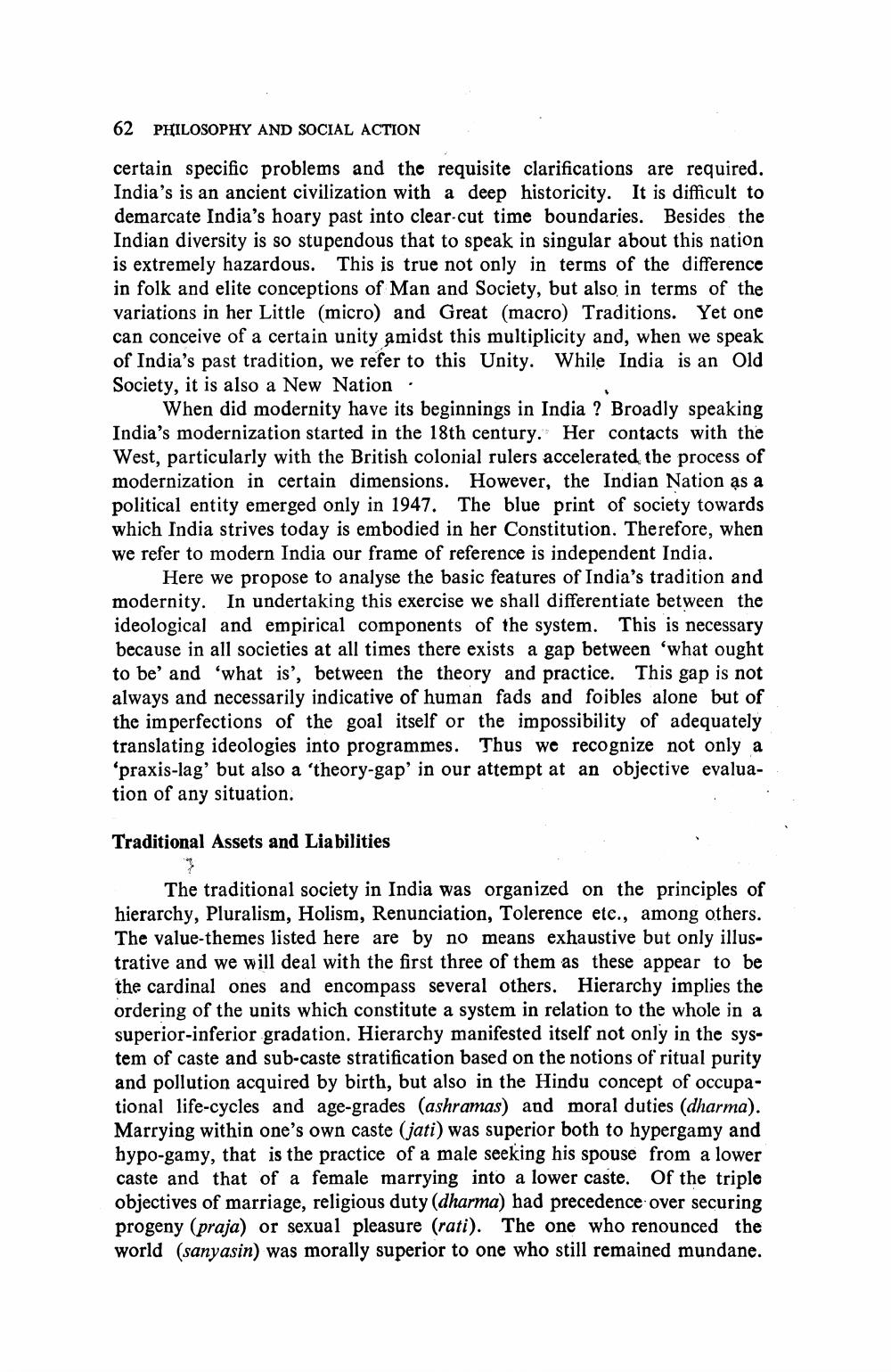Book Title: Traditional Values And Contemporary Dilemmas India Author(s): T K Oommen Publisher: T K Oommen View full book textPage 2
________________ 62 PHILOSOPHY AND SOCIAL ACTION certain specific problems and the requisite clarifications are required. India's is an ancient civilization with a deep historicity. It is difficult to demarcate India's hoary past into clear-cut time boundaries. Besides the Indian diversity is so stupendous that to speak in singular about this nation is extremely hazardous. This is true not only in terms of the difference in folk and elite conceptions of Man and Society, but also in terms of the variations in her Little (micro) and Great (macro) Traditions. Yet one can conceive of a certain unity amidst this multiplicity and, when we speak of India's past tradition, we refer to this Unity. While India is an Old Society, it is also a New Nation. When did modernity have its beginnings in India? Broadly speaking India's modernization started in the 18th century. Her contacts with the West, particularly with the British colonial rulers accelerated the process of modernization in certain dimensions. However, the Indian Nation as a political entity emerged only in 1947. The blue print of society towards which India strives today is embodied in her Constitution. Therefore, when we refer to modern India our frame of reference is independent India. Here we propose to analyse the basic features of India's tradition and modernity. In undertaking this exercise we shall differentiate between the ideological and empirical components of the system. This is necessary because in all societies at all times there exists a gap between 'what ought to be' and 'what is', between the theory and practice. This gap is not always and necessarily indicative of human fads and foibles alone but of the imperfections of the goal itself or the impossibility of adequately translating ideologies into programmes. Thus we recognize not only a 'praxis-lag' but also a 'theory-gap' in our attempt at an objective evaluation of any situation. Traditional Assets and Liabilities 7 The traditional society in India was organized on the principles of hierarchy, Pluralism, Holism, Renunciation, Tolerence etc., among others. The value-themes listed here are by no means exhaustive but only illustrative and we will deal with the first three of them as these appear to be the cardinal ones and encompass several others. Hierarchy implies the ordering of the units which constitute a system in relation to the whole in a superior-inferior gradation. Hierarchy manifested itself not only in the system of caste and sub-caste stratification based on the notions of ritual purity and pollution acquired by birth, but also in the Hindu concept of occupational life-cycles and age-grades (ashramas) and moral duties (dharma). Marrying within one's own caste (jati) was superior both to hypergamy and hypo-gamy, that is the practice of a male seeking his spouse from a lower caste and that of a female marrying into a lower caste. Of the triple objectives of marriage, religious duty (dharma) had precedence over securing progeny (praja) or sexual pleasure (rati). The one who renounced the world (sanyasin) was morally superior to one who still remained mundane.Page Navigation
1 2 3 4 5 6 7 8 9 10
